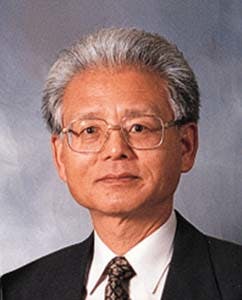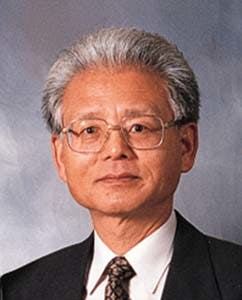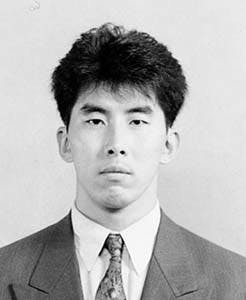Sok YuiSyncrude Canada Ltd. and Mitsubishi Oil Co.'s (MOC) Petroleum Research Laboratory jointly evaluated the quality of various Athabasca bitumen-derived vacuum gas oils (VGOs) and solvent-deasphalted oil (DAOs) as feedstocks for fluid catalytic cracking (FCC) units. They determined that FCC feeds comparable to the VGO from a typical Alberta light crude oil can be produced from oil sands bitumen by selecting appropriate upgrading processes.
Syncrude Canada Ltd.
Edmonton, AlbertaNobukazu Matsumoto, Yoichi Sasaki
Mitsubishi Oil Co. Ltd.
Kawasaki, Japan
Of the nine Athabasca bitumen feeds tested, three can be processed in the FCC unit. Another four can be processed in the resid FCC unit.
The FCC feeds from Syncrude's current and future potential upgrading processes were evaluated in a riser pilot plant unit at Sanseki Techno Co. Ltd., MOC's affiliate in Kawasaki, Japan. Product yields and product qualities, such as sulfur and nitrogen contents, research and motor octane numbers (RON and MON) of gasoline, and cetane numbers of light cycle oils, were investigated.
Correlations to predict product yields and conversion at specific severities were developed as a function of feed properties. The results from this project can be used in marketing studies and in the selection of upgrading processes.
Background
Syncrude operates a surface mining oil sands plant at the Athabasca oil sands deposit in northern Alberta and produces Syncrude Sweet Blend (SSB) crude oil from the extracted bitumen. The bitumen is currently upgraded in two Fluid Cokers and an ebullating-bed hydrocracker (LC-Finer), followed by hydrotreatment of the naphtha, light gas oil (LGO) and heavy gas oil (HGO) fractions. The hydrotreated products are combined as SSB and shipped to refineries by pipeline.Refineries use the naphtha, LGO, and HGO fractions contained in SSB as reformer feeds, diesel or jet fuel blending stocks, and feeds to their FCC units, respectively.
Using a microactivity test (MAT) unit, several Syncrude HGOs were evaluated in the early 1990s.1 The MAT results show only directional changes and need to be verified by riser pilot plant runs. Pilot tests provide more reliable yield data and produce sufficient amounts of products for detailed characterization, such as octane numbers of gasoline and the cetane number of light cycle oil (LCO).
In the future, Syncrude will build a new vacuum unit to process a part of the bitumen. Today, Syncrude is using the results of this study to decide if they should build a new hydrocracker and/or a new solvent deasphalter. The hydrocracker would process VGO or HGO, and the deasphalter would process the vacuum residue of the bitumen or LC-Finer residue.
Feeds evaluated
Table 1 [246,937 bytes] lists VGOs and DAOs evaluated in this project.The RAINBVGO (343-524° C. fraction from Rainbow Zama crude, a typical Alberta light crude mix) was evaluated as a reference. The other samples are Athabasca bitumen feeds which were obtained from various upgrading processes.
The hydrocracker bottoms (HCBTMS) was obtained from Petro-Canada's Edmonton refinery when it processed 100% SSB. The 343° C.+ untreated coker VGO (C-VGO, thermally cracked) came from the distillation of the combined LGO and HGO from Syncrude's commercial Fluid Coker fractionator. The untreated LC-Finer VGO (LCF-VGO, hydrocracked) was prepared by blending the fractionator streams from Syncrude's LC-Finer and distilling them into the 343-524° C. fraction. The 343-524° C. cut of untreated virgin VGO (VIR-VGO) was obtained by distilling whole bitumen. The bitumen from oil sands contains about 15% LGO (IBP-343° C.) and 35% VGO (343-524° C.).
The HTV-VGO, HTLC-VGO, and HTC-VGO are a result of hydrotreating untreated VGOs at a typical condition in the Syncrude Research pilot plant and distilling the total liquid products (TLPs) to take off the 343° C.- materials.
The DAO-LCF and DAO-BIT were obtained by solvent-deasphalting LC-Finer residue and bitumen in Houston's M.W. Kellogg pilot plant. The DAOs contained some 343° C.- and 524° C.+ materials, and the DAOs were not distilled but evaluated as received. The HTDAOBIT resulted from hydrotreating the DAO-BIT at a typical condition in the Syncrude pilot plant and distilling to take off 343° C.- materials. It contained 524° C.+ materials.
Feed properties
Table 1 summarizes the feed properties, including hydrocarbon types, determined by gas chromatography (GC) - mass spectrometry (MS). The properties of untreated coker VGO are also shown, although it was not tested in the FCC pilot plant. The feeds with high hydrogen/carbon (H/C) ratio, saturates, and monoaromatics, and low nitrogen, polyaromatics, microcarbon residue (MCR), and metals are considered as good quality.Most feedstocks have the same cut range (343-524° C.) except HCBTMS, HTC-VGO and three DAOs as discussed in previous section. An analysis of Table 1 reveals that:
- Heavier feeds contain more impurities, such as sulfur and nitrogen.
- Hydrotreating substantially reduces density and impurities.
- Basic nitrogen is about one fourth to one third of total nitrogen.
- Aromaticity and H/C ratio has a strong inverse relationship.
Based on gasoline precursors, the data suggest that HCBTMS is the best feed-followed by RAINBVGO, hydrotreated virgin and LC-Finer VGOs-followed by hydrotreated coker, untreated virgin, and LC-Finer VGOs. Untreated DAOs (DAO-LCF and DAO-BIT) are low quality feeds because they contain high nitrogen, MCR, metals, and polyaromatics primarily due to large amounts of 524° C.+ residue.
FCC pilot plant
The FCC pilot test unit is a modified ARCO-type. 2Fig. 1 [88,105 bytes] is a schematic diagram of the reactor, regenerator, and simplified flow. The catalyst used was an equilibrium catalyst (Engelhard's Dimension 60).The feed from the tank is charged at the rate of 600 g/hr to the bottom of the reactor through the specially designed nozzles. Nitrogen in the feed line improves dispersion of the feed in the reactor. Cracking occurs when the feed in the reactor contacts the regenerated catalysts from the regenerator.
The cracked products and the catalysts are separated in the disengager at the top of the reactor. The catalysts in the products are trapped, while the cracked products pass through the cooler and TLPs are recovered. The spent catalysts move to the stripper, where oils entrained with the catalysts are stripped off using heated nitrogen. The catalysts then go to the regenerator through the lift line and are regenerated by burning the carbons.
The regenerated catalysts are recirculated into the bottom of the reactor. Total weight of the catalyst loaded was about 2 kg. About 50-100 g were added daily to compensate for the loss during catalyst circulation.
The flue gas is collected by a gas bag and analyzed by GC. The volume of dry gas is measured, and a portion of this is analyzed by GC. The H2S in the dry gas was determined by a sulfur balance, assuming that the sulfur in the feed less the sulfur in the products produced H2S. The collected TLPs are separately distilled into LPG (C3's and C4's), gasoline (C5-216° C.), LCO (light cycle oil: 216-343° C.), and HCO (heavy cycle oil: 343° C.+) in two distillation units: TBP (ASTM D2892) and vacuum (ASTM D1160) units. The cut points of the products followed definition by MAT evaluation (ASTM D3907). The coke yield was determined from the concentration of CO and CO2 produced by burning the spent catalyst.
Test conditions
Tests were performed at three conditions (temperature, °C., and catalyst/oil ratio, g/g):- 500° C. and 5.5 g/g (low severity) for all feeds
- 520° C. and 7.0 g/g (high severity) for all feeds
- 490° C. and 4.5 g/g (the lowest severity) for RAINBVGO, HCBTMS, HTV-VGO, and HTLCVGO, and 525° C. and 7.5 g/g (the highest severity) for HTC-VGO, VIR-VGO, LCF-VGO, DAO-LCF, DAO-BIT, and HTDAOBIT.
60% - 75% for RAIN BVGO, HCBTMS, HTV-VGO, and HTLCFVGO, and 40%- 60% for other feeds.
A 2-day (3-day for HCBTMS) operation for each condition was required to obtain sufficient amounts (about 1 l.) of LCO product for the cetane engine test. The 2-day operation produced sufficient amounts of gasoline for rating both RON and MON.
It was suspected that DAO-BIT would foul the pilot plant unit because it contains large amounts of MCR, poly aromatics, and polars. Therefore, the 2-day run with this feed was conducted at Condition 2 only. Two-hr runs were conducted for the remaining two conditions to obtain yield data only.
Every Friday, the pilot plant was shut down, all catalysts were withdrawn, and all parts were cleaned. Half of the catalysts (about 1 kg) was reloaded with new equilibrium catalysts. The loaded catalysts were circulated at 500° C. during weekends.
Product yields and conversion
Table 2 summarizes the product yields obtained by interpolating and extrapolating the data points at three severities: 55 wt %, 65 wt %, and 70 wt %.Conversion is defined as [dry gas + LPG + gasoline + coke] or [100 - LCO - HCO].
Fig. 2 [32,896 bytes] shows the gasoline yield at various conversions. Gasoline yield increases with increasing conversion. In this study, the best four feeds (HCBTMS, HTV-VGO, RAINBVGO, and HTLCVGO) appear to be close to the maximum gasoline yield at the higher conversion. By hydrotreating the feeds, gasoline yields increase by 5-8 wt % at equal conversion.
Fig. 3 [32,648 bytes] shows the LCO yield at various conversions. LCO is used as a blending stock in heating oils and diesel fuel. Lower LCO yield is desirable due to high aromatics content and low cetane number. By hydrotreating the feeds, LCO yields decrease by about 2 wt % at equal conversion.
Fig. 4 [31,594 bytes] shows the gasoline yields as a function of coke yield. The coke yield of a given FCC unit is essentially constant; FCC produces enough coke to satisfy the heat balance. Therefore, information on the relationship between coke yield and other product yields, i.e., gasoline yield, is important to understand the flexibility of operation of a given FCC plant:
- HCBTMS is the best FCC feed. It gives the highest conversion and gasoline yield, and the lowest coke yield.
- RAINBVGO, HTV-VGO, and HTLCVGO are also good FCC feeds. At the severities applied, the gasoline yields are 48-55 wt % and coke yields are 1.5-2.6 wt %. They can be processed in the FCC unit.
- VIR-VGO, LCF-VGO, HTC-VGO, and HTDAOBIT are an intermediate group of feeds. The gasoline yields are 31-45 wt % and the coke yields 3-5.6 wt %. They can be processed in the resid FCC unit.
- Untreated DAOs (DAO-LCF and DAO-BIT) produce too much coke (5-6.9 wt %) to be processed alone even in the resid FCC unit.
Product quality
Table 2 [147,481 bytes] also summarizes properties of gasoline, LCO, and HCO at equal conversions obtained by interpolating and extrapolating the data points.The range of octane numbers is 91 to 97 for RON (Fig. 5 [33,923 bytes]) and 80 to 83 for MON (Fig. 6 [32,709 bytes]). Generally, octane numbers increase with increasing conversion. Higher octane number is obtained from the feeds containing higher aromatics. Therefore, octane numbers from Athabasca bitumen are higher than those from conventional crude.
Aromatics increase as conversion increases. Unlike the octane number, the cetane number decreases with increasing conversion and aromatics (Fig. 7 [32,729 bytes]). LCO is highly aromatic (66-94 wt %), and therefore has a low cetane number (18.5 to 23.6). Normally any effort to increase gasoline octane will adversely affect the LCO cetane number.
Using product yields, combined with the sulfur and nitrogen content of the feeds and products, the distribution of sulfur and nitrogen among the FCC products was calculated. About 44-88 wt % of sulfur and 28-54 wt % of nitrogen in the feeds are maintained in the liquid products. The rest are distributed in the gas and coke. The distribution may depend on feed type, conversion, and other operating conditions such as residence time. However, no clear relationship is observed in this study.
This study revealed that product sulfur is strongly related to feed sulfur content. For use as blending stocks of gasoline and diesel fuel, the products from untreated feeds and the three DAOs (including HTDAOBIT) must be hydrotreated because of their very high levels of sulfur. Similar comments are applied to nitrogen.
Prediction of product yields
Employing a stepwise linear regression technique 3 and using feed properties as independent variables, correlations to predict product yields and conversion were developed at the following operating severities:- 500° C. and 5.5 g/g of catalyst/oil ratio
- 520° C. and 7.0 g/g of catalyst/oil ratio.
Forward and backward stepwise linear regression procedures3 were employed. These techniques do not necessarily yield the same final regression model when there is multicollinearity among the possible independent variables. In this case, backward stepwise regression analysis was performed again using all independent variables obtained from the first forward and backward stepwise regressions.
Table 3 [79,405 bytes] summarizes the regression coefficients of the following equation:
y = b0 + b1x1 + b2x2 + ... + bkxk
where: y is the conversion or product yields, x1, x2, ..., xk are feed properties and b0, b1, b2, ... , bk are regression coefficients.
Gasoline yield can be predicted by total nitrogen, saturates, and monoaromatics. Coke yield can be estimated by total nitrogen, diaromatics, and MCR. Conversion can be calculated by total nitrogen, saturates, and 524° C.+ materials. Fig. 8 [41,941 bytes] illustrates the fit for the gasoline yield correlations.
To verify the correlations, sample calculations were performed using three VGOs (C-VGO, HTLCVGO2, and HTVVGO2) which were not tested in the FCC pilot plant and not used for regression analyses. C-VGO is untreated coker VGO. HTLCVGO2, and HTVVGO2 are hydrotreated LC-Finer and virgin VGOs at Condition 2. Three conversions determined by different methods are compared: conversion by linear regression correlation, conversion by definition of [gas + LPG + gasoline + coke], and conversion by definition of [100 - LCO - HCO]. Each yield in the definitions was determined by correlation.
The results are summarized in Table 4 [112,882 bytes]. All three conversions determined by different methods are similar, which suggests that the quality of the correlations is acceptable.
Acknowledgments
This article is a result of a Conrad (Canadian Oil Sands Network for Research and Development) project. It was partially funded by the Alberta Department of Energy. The authors are grateful to Art Lemke, Sherry Noyes, and Vince Nowlan at Syncrude Research for preparing the feed samples, and Masahiro Kamata at Sanseki Techno for conducting the FCC pilot tests.References
- Yui, S. and Ng, S. "Hydrotreating of a Bitumen-derived Coker HGO and Evaluation of Hydrotreated HGOs as Potential FCC Feeds Using Microactivity Test Unit," Energy & Fuel, Vol. 9, 1995, pp. 665-672.
- Wachtel, S.J., Baillie, L.A., Foster, R.L. and Jacobs, H.E. "Atlantic Richfield's Lab unit apes fluid catalytic cracker," OG J, Apr. 10, 1972, pp. 104-107.
- SigmaSat User's Manual, Jandel Scientific Software, San Rafael, Calif., 1994.
The Authors
Sok Yui is a research associate at the Edmonton Research Centre of Syncrude Canada Ltd. His research involves quality improvement of the products from oil sands bitumen, including hydrotreating, mild hydrocracking, aromatics hydrogenation, and catalyst evaluation. Prior to joining Syncrude in 1979, he was section head of manufacturing coordination and planning at Mobil Sekiyu and its refining company, Kyokuto Petroleum Industries in Tokyo, Japan. He holds BS, MS, and DEng degrees from the University of Tokyo, all in chemical engineering. He is a member of the Canadian Society of Chemical Engineering.
Nobukazu Matsumoto is a research engineer for fluid catalytic cracking at the Petroleum Research Laboratory of Mitsubishi Oil Co. Ltd., Kawasaki, Japan. He holds an MS degree in chemical engineering from the Tokyo Metropolitan University and is a member of the Society of Japan Petroleum Institute.
Yoichi Sasaki is a manager of the refining technology group at the Petroleum Research Laboratory of Mitsubishi Oil Co. Ltd., Kawasaki, Japan. He has been involved in research on refining technology for 25 years as a chemical engineer and a senior research engineer. Sasaki holds BS and MS degrees in chemical engineering from the University of Tokyo and is a member of the Society of Japan Petroleum Institute.
Copyright 1997 Oil & Gas Journal. All Rights Reserved.





